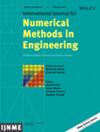Solving Fractional Differential Equations Using Differential Transform Method and Fermat Collocation Method: Formulation Convergence and Error Analysis
Abstract
This paper shows how to solve fractional differential equations (FDEs) with two methods: the differential transform method (DTM) and the Fermat collocation method (FCM). Provides a comprehensive overview of the formulation and features of both algorithms. The first method turns the differential equation and its boundary conditions into a series using a step-by-step process, then obtains the exact solution. The second method converts the equation into a set of simpler equations for the coefficients. We used Fermat polynomials (FPs) as the basis functions and evaluated the coefficients using matrix techniques. The paper also looks at how well these methods work and what kind of errors to expect. An analysis of the convergence behavior and the associated computational complexity is also presented in the paper. We solved many test problems using our methods and compared the errors with those obtained from other methods. The results of this comparison highlight the superior accuracy and effectiveness of the proposed techniques over alternative methods.

 求助内容:
求助内容: 应助结果提醒方式:
应助结果提醒方式:


